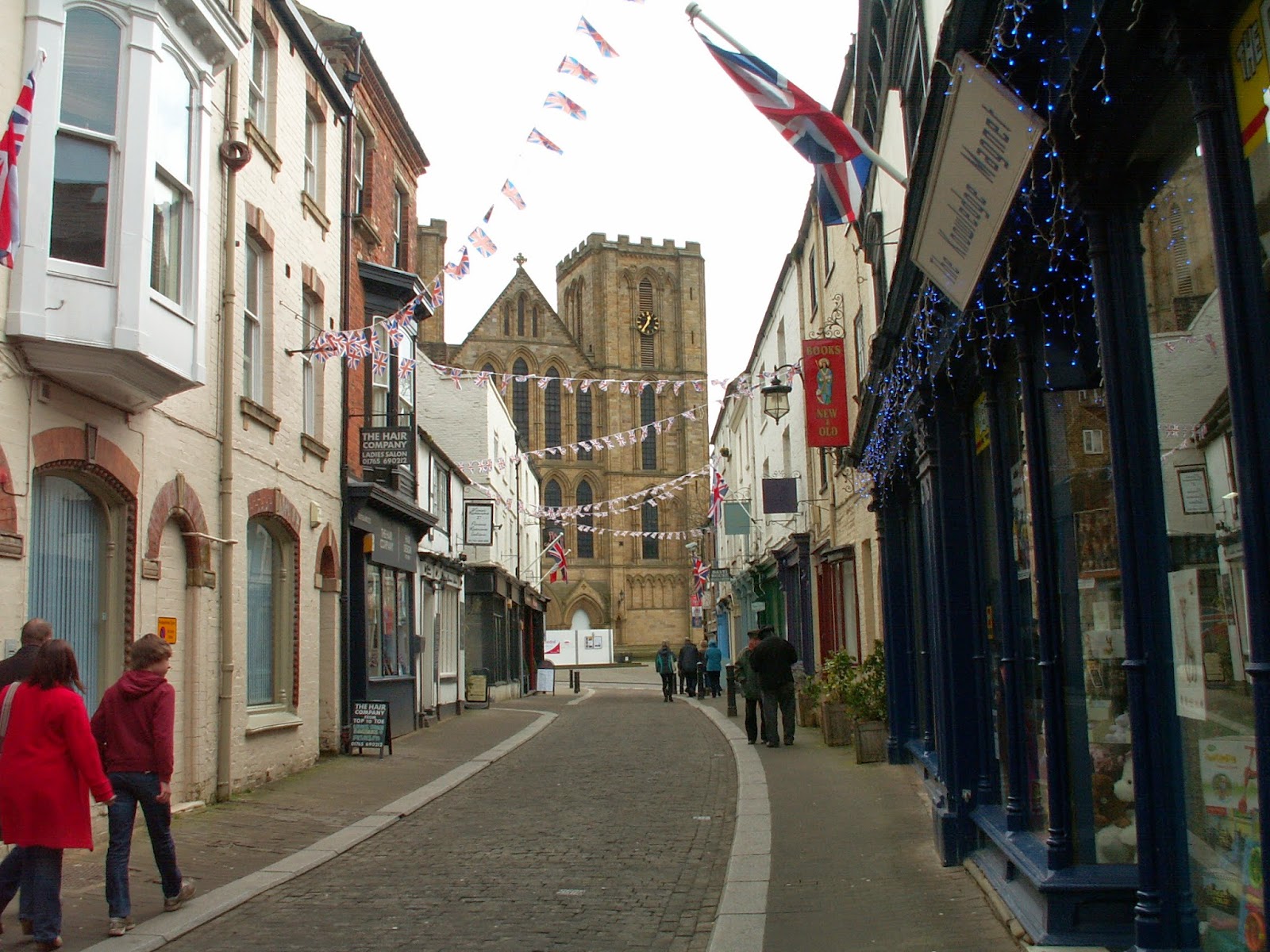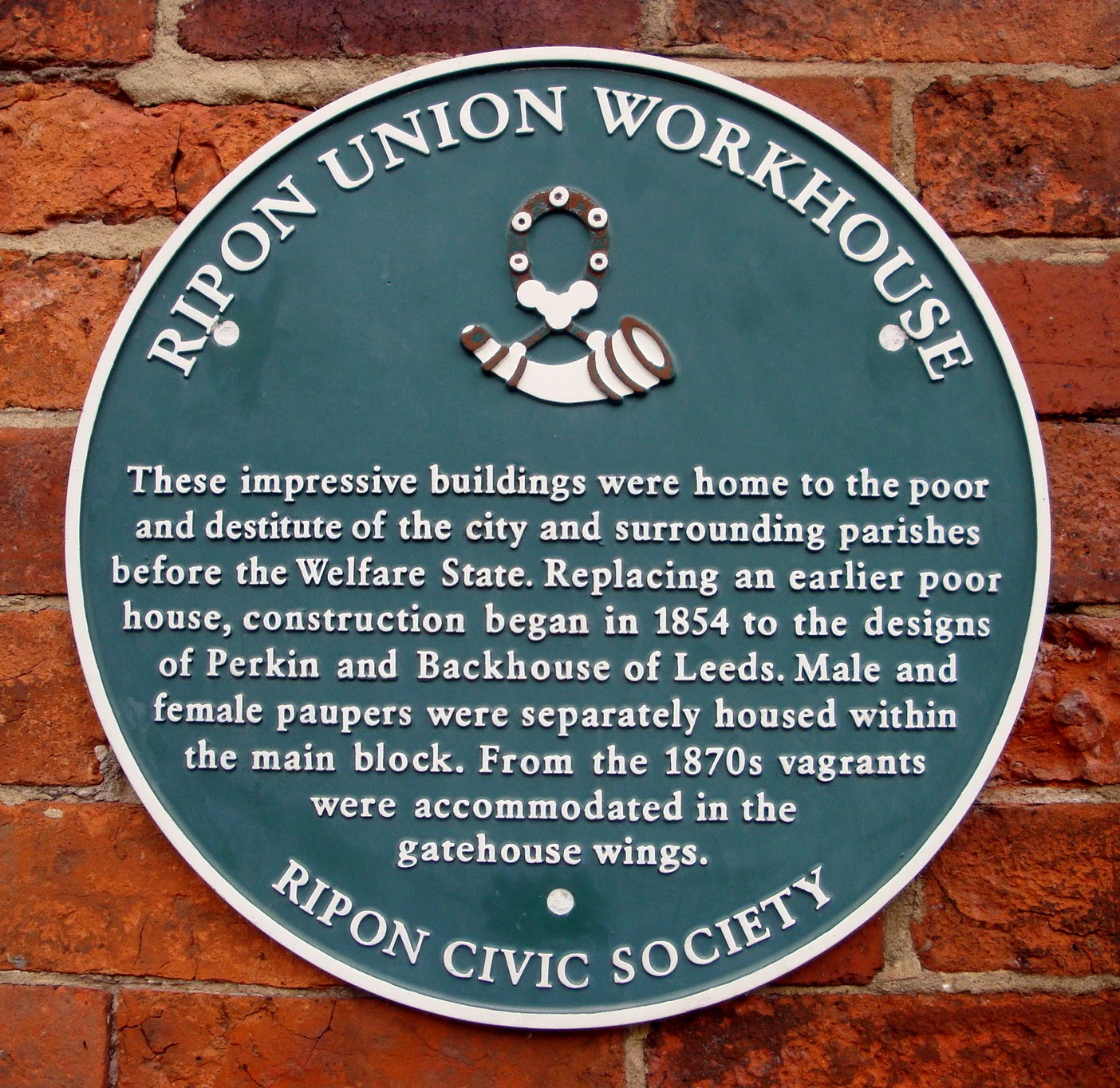Ripon
Just to the north of Knaresborough, Ripon is one of our smallest cities with a population of some 17000 people.
This is where St Wilfred built a great church in 672
Granted a charter in 886 by King Alfred the Great it was known as The Liberty of Ripon and was subsequently granted the right of sanctuary by King Athelstan (924-940) the first King of all England.
This is where St Wilfred built a great church in 672
Granted a charter in 886 by King Alfred the Great it was known as The Liberty of Ripon and was subsequently granted the right of sanctuary by King Athelstan (924-940) the first King of all England.
The crypt built by St Wilfred in 672 is all that is left of his church and can still be visited under the cathedral floor. Traditionally the dimensions are the same as those of Jesus' tomb.
A curious 18th century grave stone can be seen in the graveyard
at the rear of the cathedral.
Sanctuary
The right to sanctuary meant that miscreants who reached one of the sanctuary crosses were immune from outside law provided that they
gave up their property and swore to become a servant of the church. This type of immunity was abolished by King Henry V111. In the 13th
century there were five sanctuary
crosses around the town, each one placed just 1 mile from the cathedral.
The last remaining remnant of these, Sharow Cross, marking the
southern limits of the sanctuary, can be seen at the junction of Sharow Lane
and Dishforth Road. It is now in the care of the National Trust.
Law and order in the town was very much governed by the ecclesiastic courts until the Reformation.
However, from Saxon times the town had an early type of secular police force maintained by The Wakeman and his Constables who were responsible for law and order during the hours of darkness. The ‘Watch’ was set each evening when the Wakeman sounded his horn at each corner of the Market Cross at which time the inhabitants of the town came under his care. If any theft was committed after the watch had been set, then it was the responsibility of the Wakeman, not only to apprehend the offender but also to compensate the victim. Each householder in the City paid 2d annually for each door of their home for this policing.
After the Reformation the town had a more organised police system of Parish Constables which eventually evolved into a City Police until it was amalgamated into the West Riding Constabulary.
The old custom of Setting the Watch is still continued to this day and at 9pm each evening the City Hornblower sounds the horn at each corner of
the obelisk which replaced the old Market Cross in 1702,
and then outside the Mayor’s residence.
The original horn was presented to the town by King Alfred when he visited in 886 and is still preserved. The present horn dates to 1865 and at about 3ft in length produces a long bellowing sound which can be heard up to a mile
The Wakeman’s House, built in the 13th century, is still preserved at
one corner of the Market Place.
In 1604 the Wakeman became the Lord Mayor and the Town Hall a former town house along one side of the Market Place was presented to the City in the late 18th century. It bears the inscription, ‘Except Ye Lord Keep Ye Cittie Ye Wakeman Waketh In Vain.’
Another interesting corner of the Market Place with
the Unicorn Hotel in the background.
Another interesting custom dating back to the 17th century is enacted on Market Day when at 11am each Thursday, the Bellman declares the market to be open. The Bellman was also responsible for the running of the market and indeed was the person who whipped miscreants sentenced by the courts.
The Unicorn Inn in the Market place is one of the oldest in Ripon and is now a Wetherspoons house.The entrance to the right of this photograph in Kirkgate lead into the rear yard and stables'
www.ripon.internet.com tells us:
For several decades from the 1760s, the Unicorn was famous for a character known as Tom Crudd, also known as Thomas Spence and "Old Boots". Here is a description of Old Boots from 1807.























.jpg)



No comments:
Post a Comment